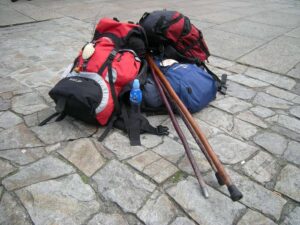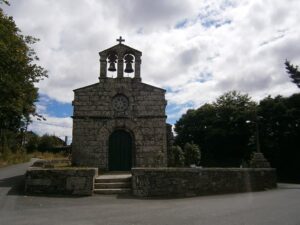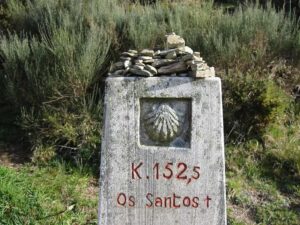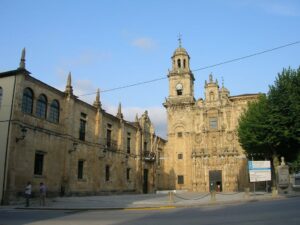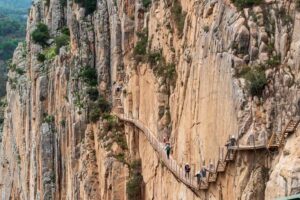 Anyone who has walked the Camino de Santiago knows that it is not just a long walk. It is an experience that transforms, unites, and awakens. That is why, the moment of returning home, when everything is over and it’s time to go back to the routine, it can trigger a mix of nostalgia, sadness, and even disorientation. This is known as the post-Camino syndrome, a real phenomenon that more and more pilgrims recognise and which deserves to be understood.
Anyone who has walked the Camino de Santiago knows that it is not just a long walk. It is an experience that transforms, unites, and awakens. That is why, the moment of returning home, when everything is over and it’s time to go back to the routine, it can trigger a mix of nostalgia, sadness, and even disorientation. This is known as the post-Camino syndrome, a real phenomenon that more and more pilgrims recognise and which deserves to be understood.
At Mundiplus, your specialised Camino de Santiago trips agency, we want to explain to you why you may feel longing for the days lived and give you tips on how to cope with returning to the routine.
Índice de contenidos
What is post-Camino syndrome?
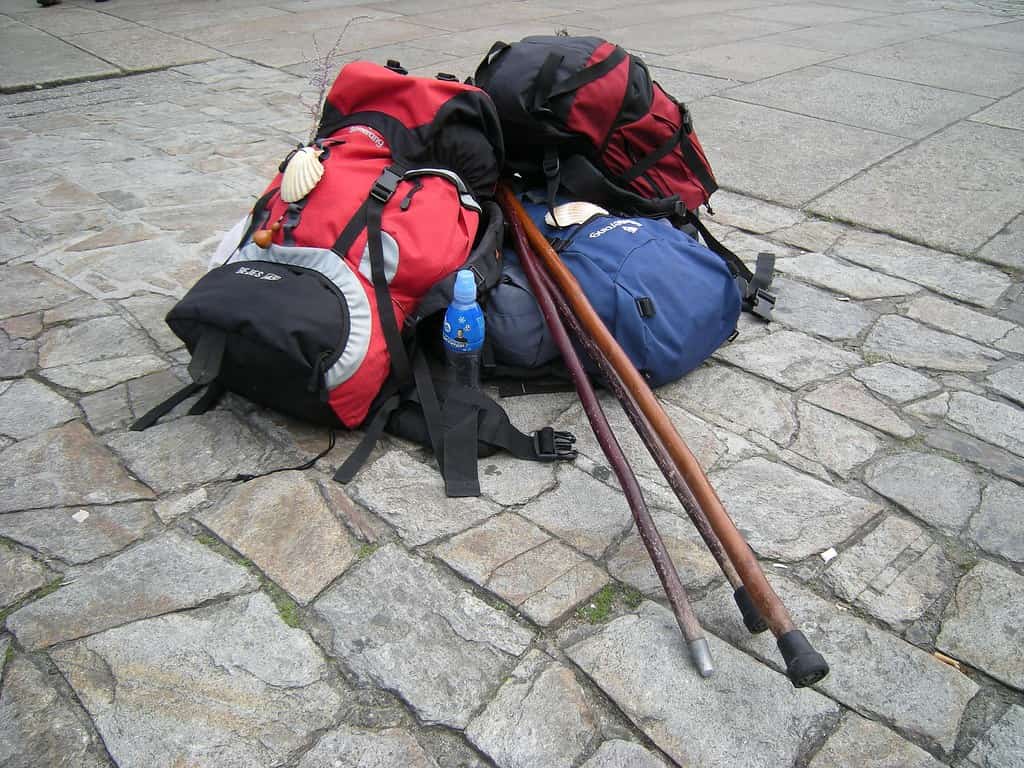
The “post-Camino syndrome” is not an official medical condition, but it is a psychological and emotional phenomenon widely described in pilgrim forums, travel books, and conversations among those who have lived through this experience. It is an emotional adaptation process, a kind of life hangover that arises after such an intense experience.
Common symptoms
It is not uncommon for the days (or even weeks) following the return, for the pilgrim to experience:
- Apathy or loss of motivation. After living with such a clear purpose as reaching Santiago, many people feel disoriented when they return to a routine without that same sense of purpose.
- Lack of connection with their family or work environment. The inner change experienced during the pilgrimage can clash with the inertia of everyday life, making the pilgrim feel out of place or misunderstood.
- Melancholy without apparent cause. It is normal for the body to be at home, but the mind and heart still remain on the paths. This longing translates into a sadness that is hard to explain.
- Constant desire to walk again. The act of walking becomes a form of active meditation. When losing that daily habit, many feel a physical and emotional void.
- The impression that nothing in their surroundings has changed, while he or she is no longer the same person. The experience transforms, but upon returning, everything seems to be where it was left. This disconnection causes frustration and the feeling of not fitting in the same way.
The Camino de Santiago is not just physical. Every step, every conversation, every silence under the rain or sun leaves an impression. The simple act of living with just enough, without rushing, in connection with nature and with people from all over the world, creates a parallel reality. This, when it ends, can seem more real than everyday life itself.
Why does returning home affect us so much?

During the pilgrimage, a bubble of meaning is created. One walks with a clear purpose, lives with only the essentials, and every day is full of symbolism. Upon returning, that clarity gets blurred in the daily obligations.
The disconnection from daily rhythm
The daily routine —work, schedules, news, traffic— can feel excessive or superficial after experiencing the simplicity of the Camino. One goes from “presence mode” to “automatic mode” in a matter of hours, and that is disorienting.
The symbolic value of the pilgrimage
Many pilgrims begin the journey for personal reasons: to overcome a loss, seek answers, or celebrate a new stage in life. Upon completion, it is common to feel that a cycle has closed… but upon returning, that sense can fade, causing a feeling of loss or incompleteness.
Routes of the Camino de Santiago: different experiences, different returns
Not all routes are the same. The routes directly influence the inner experience and also how the return is handled. Some are more introspective, others more social; some are more physically demanding, others gentler. The logistics, the environment, and the type of pilgrims encountered also make a difference.
Camino Francés
It is the most popular and busy route, ideal for those who value fellowship with other pilgrims. It offers a rich experience of encounters, hospitality, tradition, and a variety of landscapes. Each day brings a mix of physical effort, cultural richness, and human warmth.
Logistically, it is the most accessible: the return from Santiago is easy thanks to the good transport connections. Many people say that the greatest emotional difficulty after completing this route is not the walking itself… but stopping and saying goodbye to so many bonds formed day by day.
Camino Portugués
This route combines spiritual tradition with rural and urban landscapes. Starting from Porto or Tui, this option is perfect for those seeking balance between company, nature, and culture. It is somewhat less crowded, but still offers opportunities for connection with other pilgrims. Additionally, the stages are usually accessible to all levels.
Logistically, it is comfortable: it has good infrastructure, especially in the central section. The return home may require prior transfers if not starting from a large city, but it is manageable. It is a route with its own identity and a peaceful pace.
Camino Portugués by the Coast
One of the most chosen routes in recent years is the Camino Portugués by the coast. It is an ideal option for those seeking a balance between the sea, culture, and accessible hiking. This variant maintains the traditional flavour with the added attraction of the Atlantic coastline.
If you’re considering this route, you can find the details of the Camino de Santiago Portuguese route from Porto to A Guarda and the Camino from A Guarda to Santiago de Compostela.
Camino del Norte
Ideal for those seeking introspection and natural beauty. This coastal route follows the Cantabrian coastline, passing through fishing villages, cliffs, and green hills. It is physically demanding due to its continuous elevation changes, but in return, it offers spectacular landscapes and a quieter atmosphere than other routes. It is perfect for those who wish to walk in connection with the sea and themselves.
The return from Santiago may require more connections if the starting point was a small town, but train or bus connections make it easier.
For those attracted to the sea and seeking a more intimate experience, the stretch between Santander and Gijón is a charming option. In this section, the combination of coastal landscape and tranquillity makes every stage an opportunity to disconnect from the noise and reconnect with oneself.
If you’re drawn to this alternative, you can explore in detail the Camino de Santiago Santander Gijón and get inspired by its contemplative character.
Camino Primitivo
Considered the most physically demanding route, it traverses mountainous landscapes between Asturias and Galicia. It is perfect for experienced pilgrims or those seeking a deeper connection with nature and history. The toughness of the terrain is compensated by the solitude, silence, and authenticity of the journey. The stages require preparation, but the emotional reward is intense.
There are fewer services than on other routes, although enough to proceed safely. If you wish to return to the starting point in Oviedo, you need to consider several segments by train or bus.
Camino Inglés
A brief yet intense route that can be completed in less than a week. It is ideal for those with little time or those wishing to make their first contact with the spirit of the Camino. Despite its shortness, it offers an authentic experience: peaceful villages, green meadows, Galician hospitality, and fewer pilgrims. It is a thoughtful and gentle option.
Logistically, it is straightforward: Ferrol and A Coruña are well connected. Many also choose it as a complement to a longer route completed previously.
Camino a Finisterre y Muxía
This extension towards the “end of the world” is a magical and symbolic experience. Many pilgrims decide to continue to Finisterre or Muxía, seeking a more personal and contemplative closure. The route is serene, filled with coastal and rural landscapes, and allows pilgrims to absorb their experience at a slower pace. It is common to walk in solitude or in small groups.
Tips for Dealing with Post-Camino Syndrome

Although there are no magic solutions, there are strategies that can help you integrate your Camino experience into everyday life.
- Give yourself time. Don’t try to “turn the page” immediately. The experience needs to settle. Allow yourself days of rest, silence, or even to miss the adventure. It’s normal to feel odd when you return.
- Create a closing ritual. Some pilgrims write a farewell letter. Others create a photo album or do a commemorative meditation. Closing the journey with a symbolic gesture can help you channel your emotions.
- Turn nostalgia into action. If you miss walking, organise small routes on weekends. If you miss the conversations, join a group of former pilgrims or participate in talks. There are many ways to keep “walking” without leaving home.
- Integrate what you’ve learned. Make a list of the lessons you’ve learned and how you can apply them to your life: patience? Less technology? More silence? Daily gratitude? The true value of the experience lies in its transformative legacy.
Repeating the Camino: A Flight or a Reunion?
Going back to walk is not a sign of escapism, but of reunion. Many pilgrims repeat the experience every year as a way to reconnect with their essence. And every time, it is different. Even those who cannot do it physically find ways to live the “spirit of the Camino” in their neighbourhoods, communities, or through small projects of aid and welcoming to other pilgrims.
The True End of the Camino
Arriving in Santiago is not the end of the journey. It is merely a threshold. The true meaning begins when you return home, and you have to decide how to continue walking without the backpack, without the shell, without the credential… but with everything you’ve lived in your heart. Learning to live with the same humility, gratitude, and mindfulness with which you walked through Galician lands or the northern paths—that is the true challenge.
And you? Have you experienced post-Camino syndrome? What have you done to integrate it into your daily life?
Whatever your experience, remember: the Camino does not end. It simply changes form. And those who have walked once, will forever carry the echo of their steps.

